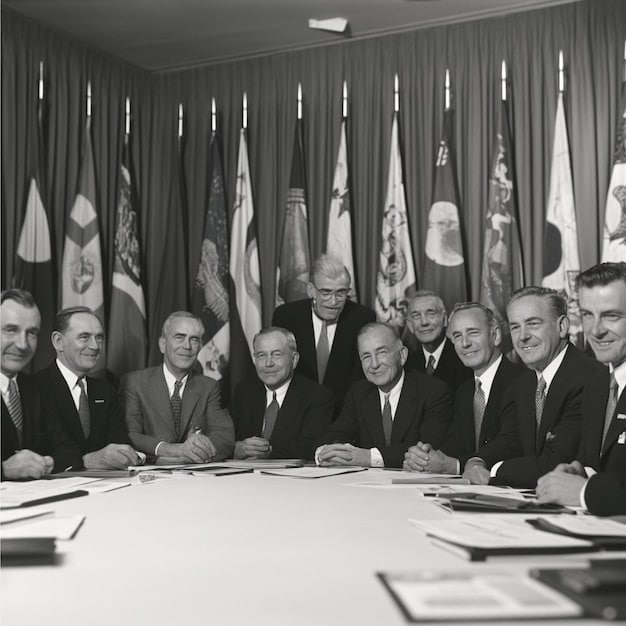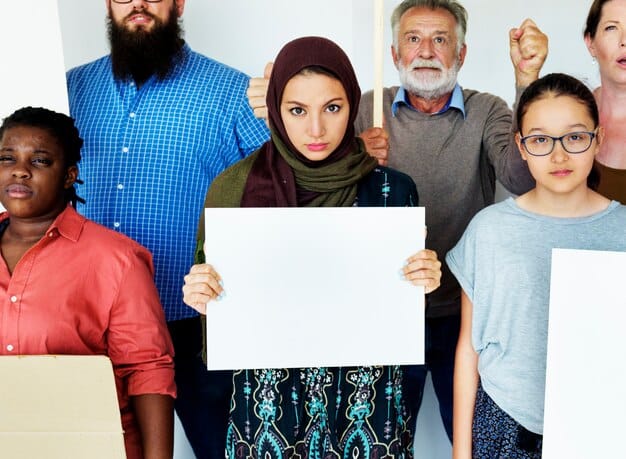US Stance on Human Rights: Understanding the Political Climate

Understanding the US Stance on International Human Rights in the Current Political Climate involves navigating a complex landscape of legal obligations, political ideologies, and evolving global priorities, often reflecting a tension between domestic interests and universal values.
Navigating the labyrinth of international relations requires a clear understanding the US stance on international human rights in the current political climate. Let’s delve into how the US balances its global responsibilities with domestic priorities.
The Historical Context of US Human Rights Policy
Understanding the foundation of US human rights policy requires a look back at its historical evolution. Initially, the US played a key role in shaping the Universal Declaration of Human Rights after World War II, a document that enshrines fundamental rights and freedoms for all.
However, the subsequent Cold War era saw a more selective application of these principles, often prioritizing strategic alliances over consistent human rights advocacy.
Early US Involvement in Human Rights Charters
The US contribution to the Universal Declaration of Human Rights is undeniable. However, the road to full implementation was fraught with challenges.
- US advocacy for the inclusion of freedom of speech and religion.
- Debates over economic and social rights versus civil and political liberties.
- The influence of Eleanor Roosevelt in shaping the final document.
Despite advocating for these rights, the US faced internal contradictions, particularly regarding civil rights within its own borders.
The Cold War and Selective Application
The Cold War forced the US to make strategic decisions that often clashed with its human rights rhetoric. Supporting authoritarian regimes to counter Soviet influence became a common practice.

This era highlighted the tension between geopolitical interests and the consistent application of human rights principles.
In conclusion, the historical context reveals a complex picture of US human rights policy, marked by both significant contributions and strategic compromises.
Key US Laws and Treaties on Human Rights
The US legal framework on human rights is built on a combination of domestic laws and international treaties. While the US has ratified some major international human rights treaties, it has done so with reservations, understandings, and declarations (RUDs) that limit their direct applicability in US courts.
These RUDs often reflect concerns about national sovereignty and the separation of powers.
The Role of the US Constitution
The US Constitution, particularly the Bill of Rights, provides a baseline of human rights protections for individuals within the US.
These protections include freedom of speech, religion, the right to due process, and protection against cruel and unusual punishment.
- The First Amendment guarantees freedom of speech and religion.
- The Fourth Amendment protects against unreasonable searches and seizures.
- The Fifth Amendment ensures due process and protection against self-incrimination.
However, these protections primarily apply to actions by the government, not private actors.
International Treaties and Their Implementation
The US has ratified several international human rights treaties, including the International Covenant on Civil and Political Rights (ICCPR) and the Convention against Torture (CAT).
However, the US has often attached RUDs to these treaties, limiting their impact on domestic law.
In summary, while the US legal framework incorporates both domestic and international human rights standards, implementation is often complicated by reservations and interpretations that prioritize national interests.
The Influence of Political Ideologies on Human Rights
Political ideologies play a significant role in shaping the US approach to international human rights. Different administrations, influenced by varying ideologies, may prioritize different aspects of human rights or adopt different strategies for promoting them.
This ideological divide often reflects broader debates about the role of government, individual liberty, and the balance between security and human rights.
Conservative Perspectives
Conservatives often emphasize national sovereignty and a more cautious approach to international law. They may prioritize security concerns over certain human rights issues.
- Emphasis on national interests and border security.
- Skepticism towards international institutions and treaties.
- Focus on individual responsibility and limited government intervention.
During conservative administrations, there might be a greater emphasis on bilateral relations and less support for multilateral human rights initiatives.
Liberal Perspectives
Liberals tend to support a more robust role for international law and institutions in promoting human rights. They often prioritize social and economic rights alongside civil and political liberties.

Liberal administrations often advocate for human rights as a central component of foreign policy.
In conclusion, political ideologies significantly influence the US approach to international human rights, leading to shifts in policy priorities and strategies depending on the administration in power.
US Foreign Policy and Human Rights: A Balancing Act
Integrating human rights into US foreign policy presents a complex balancing act. The US must navigate competing interests, strategic alliances, and the need to maintain its influence in global affairs.
This often results in selective engagement, where human rights concerns are weighed against other foreign policy objectives.
Case Studies of US Engagement
Examining specific cases reveals the intricacies of the US approach to human rights in foreign policy. Consider the US relationship with Saudi Arabia.
Despite human rights concerns, the US maintains a strategic alliance with Saudi Arabia due to its role in oil production and regional security.
- Strategic alliances versus human rights concerns.
- Economic interests influencing policy decisions.
- The role of advocacy groups in pushing for change.
Another example is US policy towards China, where economic engagement is balanced against concerns about human rights abuses.
The Role of Sanctions and Diplomacy
The US employs various tools to promote human rights abroad, including sanctions, diplomacy, and support for civil society organizations.
Sanctions are often used to penalize governments or individuals responsible for human rights violations.
In summary, US foreign policy and human rights are intertwined in a complex dance, where strategic interests often temper the pursuit of universal human rights values.
The Impact of Domestic Issues on International Human Rights
Domestic issues within the US, such as racial inequality, immigration policies, and criminal justice reform, can significantly impact its credibility and influence on the international stage.
These domestic challenges often undermine US efforts to promote human rights abroad.
Racial Inequality and Human Rights
The legacy of racial inequality in the US continues to affect its ability to credibly advocate for human rights globally. Incidents of police brutality and systemic discrimination draw international criticism.
These issues are often cited by other countries as evidence of US hypocrisy.
- The impact of systemic racism on international perceptions.
- The role of social movements in highlighting domestic human rights issues.
- The importance of addressing domestic issues to enhance international credibility.
Addressing racial inequality is crucial for regaining moral authority in the realm of international human rights.
Immigration Policies and Border Security
US immigration policies and border security measures have also come under scrutiny for potential human rights violations. The treatment of asylum seekers and migrants at the border has sparked international condemnation.
Separation of families and detention conditions raise serious human rights concerns.
In conclusion, domestic issues within the US have a direct impact on its ability to effectively promote international human rights. Addressing these challenges is essential for restoring credibility and influence.
Future Trends and Challenges for US Human Rights Policy
Looking ahead, US human rights policy faces numerous challenges and potential shifts. The rise of new geopolitical actors, technological advancements, and evolving global norms will all influence the future direction of US engagement.
Adapting to these changes will require a nuanced and forward-thinking approach.
The Rise of New Geopolitical Actors
The emergence of new global powers, such as China and Russia, presents challenges to the US-led international order. These countries often have different approaches to human rights.
This shift in the global balance of power requires the US to adapt its strategies and forge new alliances.
- The need for multilateral cooperation to address global human rights challenges.
- The role of non-state actors in promoting and protecting human rights.
- The importance of building consensus around universal human rights values.
The US must work with like-minded countries to uphold human rights standards in the face of growing authoritarian influence.
Technological Advancements and Human Rights
Technological advancements, such as artificial intelligence and social media, raise new human rights concerns. Surveillance technologies and online censorship pose threats to privacy and freedom of expression.
The US must address these challenges through regulation and international cooperation.
In summary, the future of US human rights policy will depend on its ability to adapt to emerging geopolitical realities and technological advancements, while remaining true to its core values.
| Key Point | Brief Description |
|---|---|
| 📜 Historical Context | US policy evolved from championing the Universal Declaration to selective application during the Cold War. |
| ⚖️ Legal Framework | US law combines domestic rights with treaties, often limited by reservations prioritizing sovereignty. |
| 🌍 Foreign Policy Balance | US balances human rights with strategic interests, leading to selective engagement and alliances. |
| 🏠 Domestic Impact | Domestic issues like inequality affect US credibility and influence on global human rights. |
Frequently Asked Questions
▼
The Universal Declaration of Human Rights is a document adopted by the United Nations in 1948, outlining fundamental rights and freedoms for all individuals, regardless of nationality or background.
▼
US law protects human rights through the Constitution, particularly the Bill of Rights, which guarantees freedoms like speech, religion, and due process for all individuals within the US.
▼
Challenges to US human rights policy include balancing strategic interests with human rights concerns and addressing domestic issues like racial inequality to maintain international credibility.
▼
Political ideologies significantly shape US human rights. Conservatives prioritize national sovereignty, while liberals support a robust role for international law and human rights promotion globally.
▼
Domestic issues like racial inequality and immigration policies can undermine US efforts to promote human rights on an international scale, thereby affecting global perceptions of the nation.
Conclusion
In conclusion, understanding the US stance on international human rights in the current political climate requires acknowledging a complex interplay of historical factors, legal frameworks, political ideologies, and strategic interests. Balancing these elements remains a significant challenge for the US as it seeks to uphold its values on the global stage.





